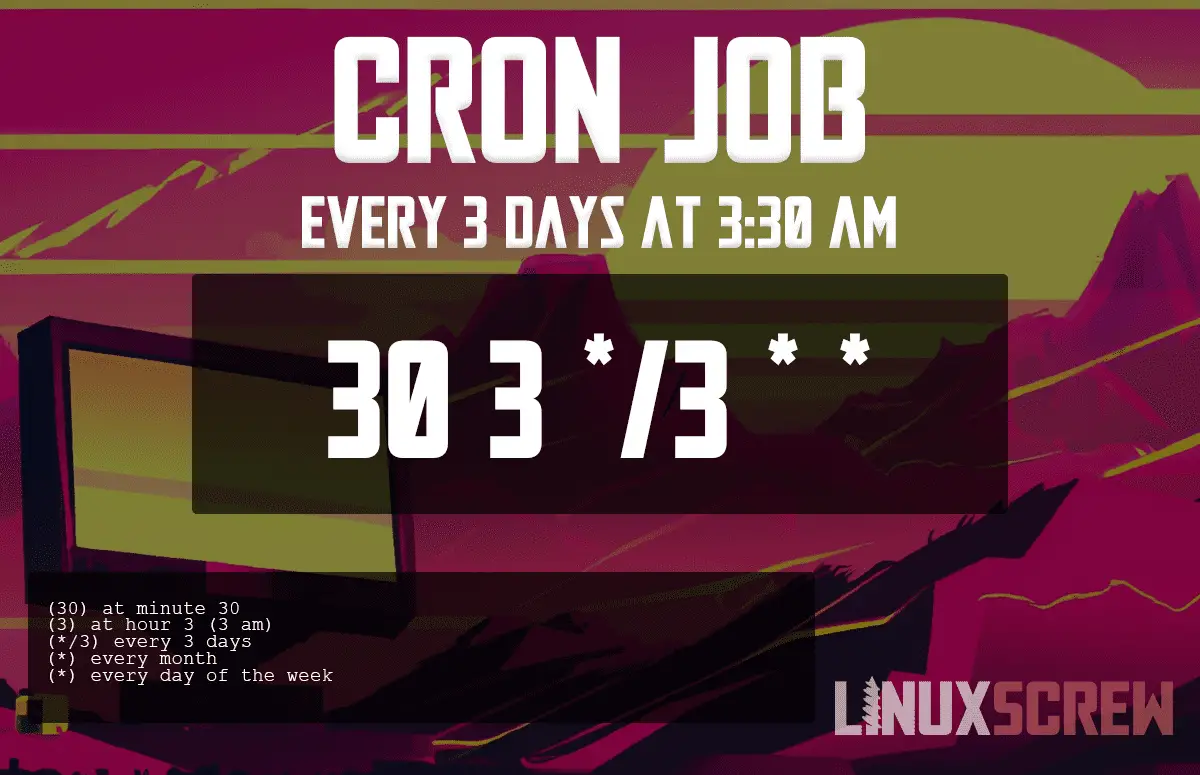This page will help you quickly and easily set up a cron job to run every 3 days at 3:30 am.
The Cron Job/Crontab
To have your task run at this frequency, use the following cron:
30 3 */3 * *
This cron command translates to the following (in Human-Readable format):
“Every 3 days at 3:30 am.”
What is a Cron Job & Crontab?
A cron job is a task that is scheduled to run at a specific time or interval. Cron jobs are typically used for automating system maintenance or administration tasks, such as running backups or sending email reports.
Each user has their own crontab file, and the commands in this file are only executed by that particular user. The file contains instructions for the cron daemon. To edit your crontab file, you can use the crontab command.
Cron Fields
Every cron job uses five fields. Here is an explanation of what each field does in this cron, which runs “every 3 days at 3:30 am“:
FUN FACT: Cron jobs can be used to automate just about any task that needs to be performed regularly – so get creative and see what you can come up with!.
Use Cases
You might want to set up a crontab or cron job to run every 3 days at 3:30 am for several reasons, including:
- Automatically rotate log files
- Delete temporary files that are older than a certain age
- Refresh data from an external API
- Send a daily email report
Similar Cron Jobs
You might also want to run a crontab:
- every 6 days
- every 3 days
- every 2 days
- every 10 days
- every 10 days at 5:00 pm
- every 4 days at 2:00 pm
- every 1 day at 6:30 am
FUN FACT: Each user on a system can have their own crontab, and commands in them will be executed as that user..
Wrapping Up
In this article, you learned how to set up a cron job that runs every 3 days at 3:30 am. Please share this page with friends and colleagues if you find it useful.
If you have any questions, please don’t hesitate to comment below.
If you are looking for cron jobs that run at certain minutes, hours, days, weekdays, or months, or if you are looking for miscellaneous cron jobs, then check out our relevant sections, or visit our crontab cheat sheet for a list of hundreds of popular cron jobs.

